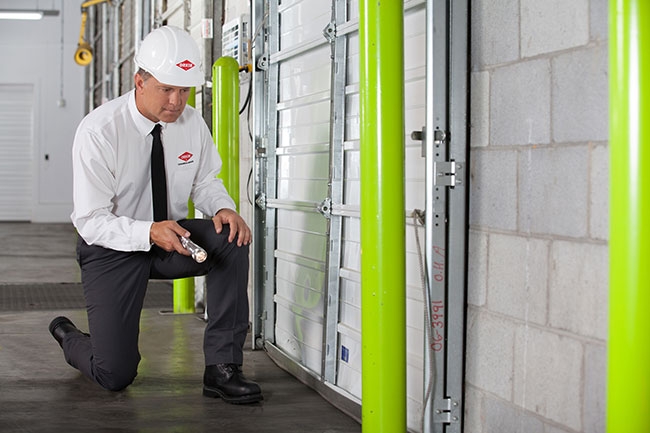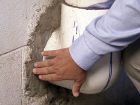
Winter poultry barn pest prevention
By Alice Sinia
Features Barn Management Production Protection A professional can help you identify pest hot spots around your property. Photo: ORKIN Canada
A professional can help you identify pest hot spots around your property. Photo: ORKIN CanadaAs you bundle up for winter, your livestock aren’t the only ones who want to stay out of the cold. Pests also seek shelter indoors when the temperatures drop. So, make the necessary preparations around your property to keep both the cold air and pests outside where they belong.
While it may seem like pests aren’t around in the winter, they are actually seeking relief indoors, and poultry facilities offer exactly what they need to survive – food, water and shelter.
If they find harbourage in your facility, these pests can breed, and once they are established, they can contaminate food, disturb livestock and even cause structural damage if the problem becomes severe.
Rodents, for example, contaminate food products with their urine, feces and saliva. They also can chew through plastic, support beams, walls, soft metals and electrical wire.
To help protect your property, develop an Integrated Pest Management (IPM) program that goes beyond chemical treatments and proactively responds to conditions that make your facility appealing to pests.
IPM strategies eliminate pests through exclusion and maintenance techniques that focus on preventing pests from entering your facility in the first place. In doing so, they also help insulate the facility against cold weather, as the strategies used to keep out pests also prevent heat loss and keep cold air from getting inside. Oftentimes, the cracks, gaps and holes that provide pests access to the building also allow cold air in and warm air out, impacting energy efficiency. To strengthen your approach to pest exclusion, there are five things you should consider:
1. Work with a pest management provider to review pest hot spots. A pest management professional can assess the facility and help you identify hot spots around your property that are attractive to pests. More than likely, there are maintenance or sanitation deficiencies in these areas that are creating ideal conditions for pests.
2. Ask your maintenance staff to inspect for gaps, cracks and holes. Before you can make repairs, you need a thorough inspection to identify problem areas and pest pressure points. Schedule an interior and exterior review of the facility for cracks, gaps, unscreened vents and holes in the building structure, paying close attention to the hot spots you found with your pest management provider. Even small cracks and holes can be a problem, as cockroaches can slide through gaps as small as a fifth of a centemetre and mice can squeeze through holes the size of a dime.
During the inspection, your maintenance team should note the location of:
- Cracks in walls, baseboards, door frames and junctions where two pieces of building material meet;
- Holes in walls and ceilings;
- Gaps around utilities;
- Unscreened vents and pipe endings;
- Unscreened floor drains;
- Water leaks;
- Window and door screen tears; and
- Damaged weather stripping and door sweeps.
3. Schedule necessary repairs as soon as possible. Once you’ve identified the areas that require maintenance, schedule repairs right away. The sooner these issues are resolved, the less likely pests are to enter your building. Making these repairs will also fortify your property for the winter weather. As you make your repairs, be sure to:
- Use weather-resistant or permanent caulking to seal gaps and cracks. Doing so will increase the longevity of your repairs.
- Install weather stripping and door sweeps on all exterior doors.
- Replace broken or missing vent covers
4. Implement exclusion strategies. In addition to repairs, these exclusion strategies will deter pest entry:
- Create positive airflow, meaning air flows out (not into) the building. To test your airflow, stand in a door and hold up a strip of paper. If the paper blows away from the building, you have positive airflow. If not, you have negative airflow that actually pulls pests into your building. If this is the case, contact an HVAC professional to correct ventilation issues. They may recommend air curtains to help push pests out.
- Keep exterior doors closed as often as possible. Do not leave doors propped open while you are accepting shipments, for example.
- Clear the ground around the building of debris, litter, weeds and idle objects that would otherwise provide winter ground coverage for pests.
- Eliminate all potential food and water sources. Water becomes scarce during the winter as it freezes, making liquid water in your building a hot commodity for pests.
5. Regularly monitor the effectiveness of your IPM plan and exclusion strategies. Work with your pest management provider to establish a plan for regular monitoring. Doing so will help you gauge the effectiveness of your strategy and respond quickly if pest pressures change. Insect light traps, sticky glue board monitors and rodent bait stations can be effective monitoring tools as well, so be sure to discuss your plan of attack with a professional.
Exclusion is a long-term, effective strategy, and diligent maintenance and monitoring go a long way in protecting your property and livestock from pests and the elements.
Alice Sinia, Ph.D. is quality assurance manager with regulatory/lab services for Orkin Canada focusing on government regulations pertaining to the pest control industry.
Print this page

